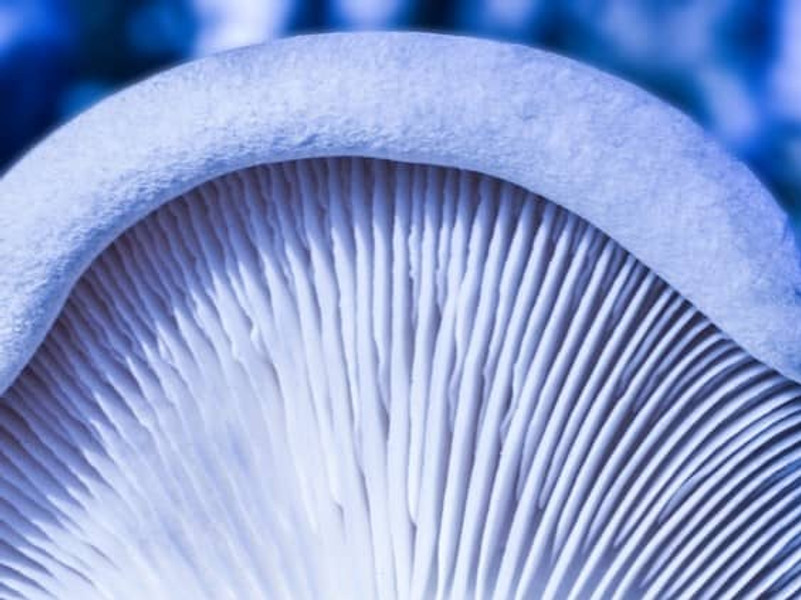Mastering the Art of Growing Blue Oyster Mushrooms: A Comprehensive Guide
Posted by Troy Cosky, Founder FunGuy Grow Supply on 28th May 2023

Introduction: Dive into Mushroom Cultivation with Blue Oyster Mushroom
Are you ready to dive into the exciting world of mushroom cultivation? Then let's start with the Blue Oyster Mushroom (Pleurotus ostreatus) – a stunning, blue hued mushroom that offers a host of benefits for beginner cultivators. From its unique physical characteristics to its high fresh air exchange requirement, cultivating this mushroom is a one-of-a-kind experience that is both easy and captivating.
In this beginner's guide, we will explore the fascinating world of Blue Oyster Mushroom cultivation, including its natural habitat, preferred spawn types, ideal growing conditions, and potential challenges. We'll also cover the best fruiting containers to use, as well as harvest and storage techniques so you can maximize your yields.
But that's not all – we'll also look at the culinary uses of this versatile mushroom, including its potential in soups and pasta, and its unique characteristics and considerations, such as its large spore load, suitability for outdoor growing, and potential health advantages.
Whether you're a seasoned grower or embarking on your first mushroom cultivation journey, the Blue Oyster Mushroom offers a fun and rewarding experience that is sure to delight you. So, are you ready to witness the wonders of nature unfold before your very eyes? Let's get started!
General Description: Distinctive Appearance and Culinary Delights

The Blue Oyster Mushroom has a distinctive and eye catching appearance, with clusters of delicate shelves that take on a striking blue color and gradually fade to grey as they mature. With its meaty and versatile fruit, this mushroom offers endless possibilities for culinary delights, making it a favorite among many chefs.
One of the most unique aspects of the Blue Oyster Mushroom is its high requirement for fresh air exchange in order to grow optimally. This means it needs more ventilation compared to other commonly cultivated varieties. Its preference for fresh air ensures that it thrives in environments where carbon dioxide levels are kept low, making it an ideal choice for indoor growing or to grow at home.
When fully grown, the Blue Oyster Mushroom can range from 5-15cm in diameter and has a velvety texture and mildly sweet flavor. Its signature overlapping caps give it an oyster like appearance and texture, making it perfect for soups, stir-fries, or sautéed dishes.
Overall, the Blue Oyster Mushroom's unique physical characteristics and preference for fresh airflow make it an exciting variety to grow and enjoy. Whether you're growing mushrooms as a hobby or looking to add new flavors and textures to your cooking repertoire, this versatile blue mushroom is sure to become a favorite in your kitchen!
Natural Habitat: Explore the Thriving Environment of Blue Oyster Mushroom
The natural habitat of the Blue Oyster Mushroom is a wonder to behold. In the wild, this beautiful mushroom is commonly found throughout North America, thriving on hardwood logs, trees, and decaying stumps during spring and fall. These optimal conditions promote its growth and offer valuable insights into successful cultivation at home.

While the Blue Oyster Mushroom can adapt to various environments, its affinity for hardwoods like oak or beech makes it an excellent candidate for cultivation. Substrates such as straw or sawdust, supplemented with nutrients like bran or soybean meal, can be used to simulate the mushroom's natural environment. With proper incubation times and temperature ranges, hobbyists can easily recreate the ideal growing conditions.
By understanding the typical growth locations and common occurrences of this magical fungus in North America, you can unlock its potential for cultivation at home while also gaining a newfound appreciation for its role in our ecosystem. The Blue Oyster Mushroom is truly a marvel. Let's continue our journey and discover even more about cultivating this fascinating species!
Cultivation: Beginner-Friendly Techniques for Successful Growth
Are you ready to begin cultivating your very own Blue Oyster Mushrooms? Well, fear not, my fellow fungi enthusiasts - this mushroom is one of the most forgiving and beginner-friendly options around.
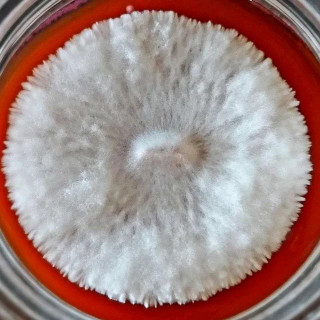
To get started, it's important to understand the preferred spawn types for this mushroom and tackle any potential mushroom growing challenges such as contamination prevention. But don't worry – with a little bit of knowledge and care, you can successfully cultivate your own Blue Oyster Mushrooms.
One crucial aspect to consider when growing this mushroom is the role of agar in its growth process. Properly preparing agar can help set you on the path to success and allow these magnificent mushrooms to flourish under your care.
Creating an ideal environment with proper temperature and conditions is also crucial for the healthy growth of these mushrooms. To maximize your yields and ensure success, be sure to explore the versatility of substrate options available for Blue Oyster Mushroom cultivation.
Of course, no cultivation process is without its challenges. But by understanding common issues such as contamination prevention and addressing them head-on, you'll be well-equipped to handle anything that comes your way.
So whether you're a seasoned mushroom grower or diving into mushroom cultivation for the first time, rest assured that cultivating Blue Oyster Mushrooms is easy and fun - with stunning rewards along the way!
Fruiting Containers: Choosing the Right Containers for Abundant Yields
When it comes to cultivating Blue Oyster Mushrooms, the right fruiting container can make all the difference. Luckily, there are several options to choose from, each with its own set of advantages and disadvantages.
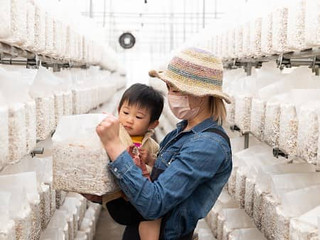
Poly Tubing
One popular option is poly tubing – a clear plastic tubing that allows for easy observation of the mushrooms as they grow. This type of container is ideal for indoor growing, as it enables you to maintain optimal conditions such as temperature and humidity. It's also easy to move around and adjust if needed.
Grow Bags
Another option is grow bags – breathable bags made from various materials such as paper or plastic. Grow bags are inexpensive, easy to use, and can be reused multiple times. They come in a variety of sizes, making them ideal for small-scale home cultivation.
Outdoor Cultivation
If you're looking for larger fruiting potential, easy to grow, and low-maintenance growth, outdoor cultivation might be your best bet. When choosing an outdoor container, consider using 5-gallon buckets with drilled holes in them. These containers enable proper drainage while keeping contaminants at bay.
No matter which container you choose, maintaining optimal conditions within it is crucial for successful Blue Oyster Mushroom growth. Make sure the environment stays humid but not too wet – excess moisture could lead to contamination or mold growth. Additionally, ensure proper air circulation by opening up your fruiting container occasionally and exposing the mushrooms to fresh air.
Whether you go for poly tubing, grow bags, or any other fruiting containers like a 5-gallon bucket with drilled holes used in outdoor cultivation, choosing the right container that suits your space is key to getting an abundant yield of Blue Oyster mushrooms at home that will delight both your eyes and taste buds!
Harvesting and Storage: Best Practices for Handling and Preserving Freshness
Congratulations on harvesting your very own clusters of Blue Oyster Mushrooms! This is an exciting moment, as it signifies the culmination of all your hard work and patience. But now what? Let's explore some best practices for handling, storing, and utilizing your freshly harvested mushrooms.
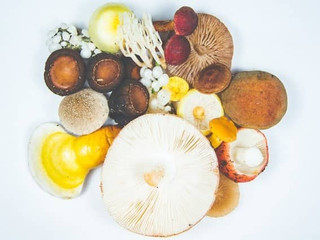
To begin with, when harvesting clusters of Blue Oyster Mushrooms, it's essential to cut them off gently with a sharp pair of sterilized scissors or a knife. Leave some of the stems attached to the substrate to ensure maximum yields during multiple flushes. Additionally, try not to touch the delicate fruiting bodies too much – this can cause bruising or damage that may shorten their shelf life.
Once you have harvested your Blue Oyster Mushrooms, it's crucial to handle them delicately if you want to prolong their freshness. Ideally, store them as clusters instead of separating individual mushrooms. This will help prevent moisture loss and extend their shelf life. However, keep an eye out for mycelium growth from the stems when stored in the refrigerator – this can be unpleasant and affect the texture.
When considering long-term storage options for your Blue Oyster Mushrooms, dehydration is an excellent method. Drying preserves the flavor and nutrients while significantly extending the shelf life. Dried Blue Oyster Mushrooms can be stored for months without spoiling and make a great addition to stocks, soups, or can be rehydrated for sautés or pasta. To dehydrate your mushrooms properly, follow these steps:
- Clean them gently with a soft-bristled brush or damp cloth.
- Slice them evenly for even drying.
- Place slices in a dehydrator at around 120°F until they are crisp.
- Store your dried Blue Oyster Mushrooms in an airtight container in a cool, dark place.
By following these best practices for harvesting and storing your Blue Oyster Mushrooms, you will maintain their exquisite flavor and quality over extended periods, allowing you to enjoy them all year round!
Culinary Uses: Exploring Versatile Flavors and Texture
Are you a foodie looking to explore unique flavors and culinary delights? Look no further than the Blue Oyster Mushroom - a versatile and delectable mushroom that is perfect for a wide range of dishes. From soups to plates of pasta, this mushroom offers a wealth of options for adventurous cooks.

One important consideration when cooking with Blue Oyster mushrooms is their stem texture, which can be chewy compared to the softer caps. However, with careful preparation, the stems can offer an enjoyable texture and taste that complement the overall dish.
For those seeking convenience in their cooking endeavors, dried Blue Oyster mushrooms are also readily available. These can be rehydrated or directly added to your favorite recipes, imbuing them with a delightful umami flavor that will satisfy even the most discerning palate.
So why not experiment with this captivating mushroom and explore its unique culinary uses? Whether you're a seasoned chef or simply keen on trying something new, the Blue Oyster Mushroom offers endless possibilities for flavorful creations that are sure to tantalize your taste buds.
Growing Parameters: Understanding Ideal Conditions for Successful Cultivation
If you're looking to cultivate Blue Oyster Mushrooms, it's crucial to understand the ideal growing parameters. Each stage of growth requires careful attention and maintenance of environmental factors. From the spawn run to fruit development and pinning, there are specific conditions that must be met for successful cultivation.
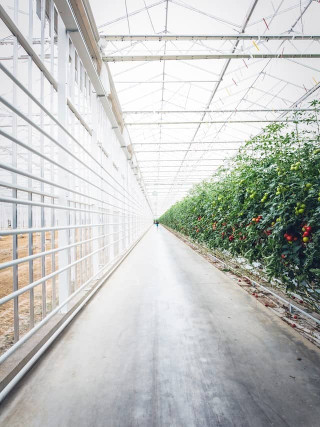
Spawn Run
- Duration: Typically around two weeks
- Temperature range: 70-75°F (21-24°C)
- Humidity levels: 85-95%
During the spawn run, your mushroom mycelium will be colonizing its substrate. It's important to maintain the recommended temperature range and humidity levels. You can achieve the desired humidity by misting or using a humidifier.
Pinning
- Temperature range: 70-75°F (21-24°C)
- Humidity levels: 85-95%
- Air exchange: Provide fresh air regularly by loosening or uncovering the container lid.
Once the spawn run is complete, your mycelium will begin to develop pins, indicating the formation of mushrooms. To accelerate their growth process, maintain the same temperature range and humidity levels as during the spawn run. Ensure proper air exchange by providing fresh air regularly.
Fruit Development
- Temperature range: 60-65°F (15-18°C)
- Humidity levels: 70%
- Watering: Avoid overwatering to prevent stem elongation or thinning.
During the fruit development stage, adjust the temperature range to 60-65°F (15-18°C) and reduce humidity levels to about 70%. Be cautious not to overwater the mushrooms as excessive moisture can affect their flavor. The typical timeframe for achieving harvestable fruits from pinning is around one week, but keep in mind that each strain may have unique requirements, so it's advisable to consult reputable sources such as suppliers or online forums if you have any doubts.
By maintaining proper air exchange, humidity, and temperature within the optimal ranges specified above throughout these stages, you'll soon be able to enjoy a delicious harvest of Blue Oyster Mushrooms!
Unique Characteristics and Considerations: Impressive Spore Load and Commercial Potential
As you delve deeper into the captivating world of Blue Oyster Mushroom cultivation, you'll discover some unique characteristics and considerations that separate this mushroom from others. One standout quality of the Blue Oyster Mushroom is its impressive spore load and the requirement for ample fresh air exchange to achieve optimal growth. While this can be a challenge for indoor cultivation, it also contributes to these mushrooms' distinctive qualities and captivating appeal.
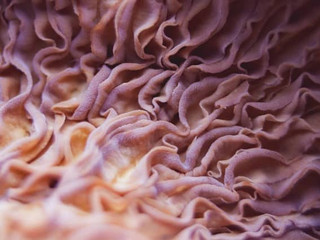
Another consideration novice growers should keep in mind is that stem growth may pose issues when stored improperly. However, with proper storage techniques, these challenges can easily be mitigated, ensuring that your beautiful mushrooms remain fresh and healthy long after they've been harvested.
While the Blue Oyster Mushroom undoubtedly has much to offer in culinary delights, including soups, pasta dishes, or even as a vegetarian substitute for meat-based recipes, it's worth noting that this fungi boasts numerous nutritional benefits as well. Packed with vitamins, minerals, and antioxidants critical for overall well-being, they make a healthy addition to any diet.
Aside from contributing to one's physical wellness through the consumption of homegrown Blue Oyster Mushrooms, there are ecological benefits as well. By cultivating these mushrooms using waste products like coffee grounds or sugar cane as substrates, or even reusing your waste paper by adding it as additional material to your substrate mixture, you're participating in sustainable practices while reducing environmental waste simultaneously.
For those considering commercial opportunities regarding specialty agricultural products locally marketed and served at restaurants or used by farm-to-table initiatives, there is potential market value within this fungi type! Gaining traction for its unique characteristics and high demand within the culinary industry allows entrepreneurs opportunities through cultivating gourmet Blue Oyster Mushrooms. By utilizing best practices learned from individual growing experiences, local markets or restaurant sales are achievable avenues towards creating feasible entrepreneurial ventures out of one's passion for gardening!
Conclusion: Embark on a Captivating Journey of Blue Oyster Mushroom Cultivation
In conclusion, the Blue Oyster Mushroom offers a captivating and unique growing experience for all skill levels. Its appeal lies in its striking blue hue and culinary versatility. In this comprehensive guide, we have explored various aspects of cultivating this mushroom, including understanding its natural habitat, providing optimal growing conditions, mastering harvesting techniques, and following proper storage recommendations.
Whether you're new to mushroom cultivation or a seasoned grower, the Blue Oyster Mushroom invites you to embark on a journey of wonder and discovery. With its rich taste, versatile textures, and numerous health benefits, it's no surprise that this gourmet mushroom is a favorite among chefs worldwide.
So why not try your hand at growing them yourself? By following our tips and techniques for successful cultivation, you'll soon be tasting mouth-watering dishes featuring your home-grown harvest. And who knows? Your newfound passion might even lead you down a path toward commercial opportunities!
In summary, cultivating Blue Oyster Mushrooms is an exciting adventure that is as rewarding as it is fascinating. So what are you waiting for? Grab some spores and get growing today! Trust us – there's nothing quite like experiencing the magic of nature firsthand with these wonderful mushrooms.
Get started on your Blue Oyster Mushroom cultivation journey today! Shop our top-quality mushroom grow kits, spawn, and growing supplies at FunGuy Grow Supply.
References
- Barh, A., Sharma, V. P., Annepu, S. K., Kamal, S., Sharma, S., & Bhatt, P. (2019). Genetic improvement in Pleurotus (oyster mushroom): a review. 3 Biotech, 9(9), 322. https://doi.org/10.1007/s13205-019-1854-x
- Sánchez, C. (2010). Cultivation of Pleurotus ostreatus and other edible mushrooms. Applied microbiology and biotechnology, 85(5), 1321–1337. https://doi.org/10.1007/s00253-009-2343-7

